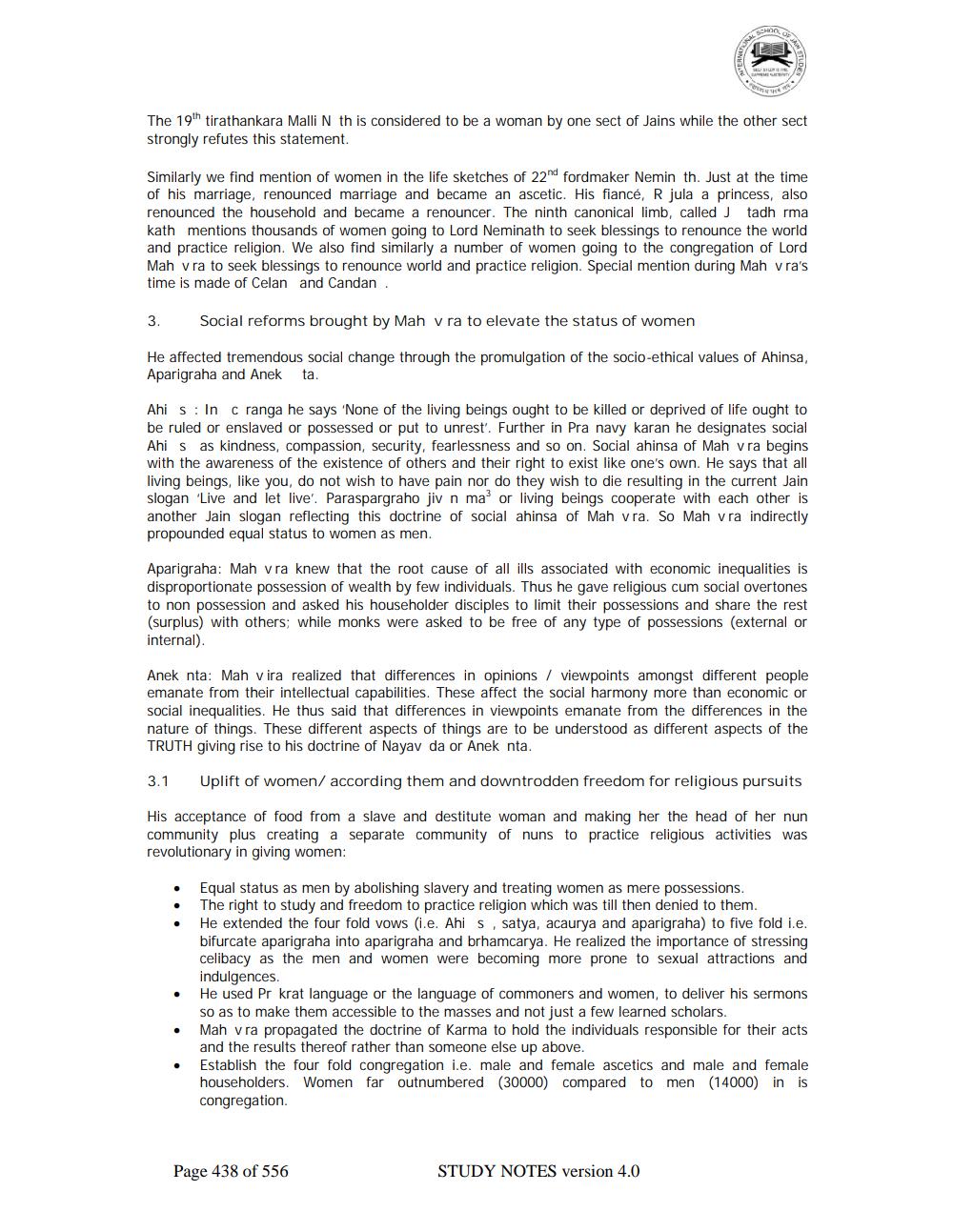________________
The 19th tirathankara Malli N th is considered to be a woman by one sect of Jains while the other sect strongly refutes this statement.
Similarly we find mention of women in the life sketches of 22 fordmaker Nemin th. Just at the time of his marriage, renounced marriage and became an ascetic. His fiancé, R jula a princess, also renounced the household and became a renouncer. The ninth canonical limb, called J tadh rma kath mentions thousands of women going to Lord Neminath to seek blessings to renounce the world and practice religion. We also find similarly a number of women going to the congregation of Lord Mah vra to seek blessings to renounce world and practice religion. Special mention during Mah vra's time is made of Celan and Candan
3.
Social reforms brought by Mah vra to elevate the status of women
He affected tremendous social change through the promulgation of the socio-ethical values of Ahinsa, Aparigraha and Anek ta.
Ahi s: In c ranga he says 'None of the living beings ought to be killed or deprived of life ought to be ruled or enslaved or possessed or put to unrest'. Further in Pra navy karan he designates social Ahis as kindness, compassion, security, fearlessness and so on. Social ahinsa of Mah vra begins with the awareness of the existence of others and their right to exist like one's own. He says that all living beings, like you, do not wish to have pain nor do they wish to die resulting in the current Jain slogan 'Live and let live'. Paraspargraho jiv n ma' or living beings cooperate with each other is another Jain slogan reflecting this doctrine of social ahinsa of Mah vra. So Mah vra indirectly propounded equal status to women as men.
Aparigraha: Mah vra knew that the root cause of all ills associated with economic inequalities is disproportionate possession of wealth by few individuals. Thus he gave religious cum social overtones to non possession and asked his householder disciples to limit their possessions and share the rest (surplus) with others; while monks were asked to be free of any type of possessions (external or internal).
Anek nta: Mah vira realized that differences in opinions / viewpoints amongst different people emanate from their intellectual capabilities. These affect the social harmony more than economic or social inequalities. He thus said that differences in viewpoints emanate from the differences in the nature of things. These different aspects of things are to be understood as different aspects of the TRUTH giving rise to his doctrine of Nayav da or Anek nta.
3.1
Uplift of women/ according them and downtrodden freedom for religious pursuits
His acceptance of food from a slave and destitute woman and making her the head of her nun community plus creating a separate community of nuns to practice religious activities was revolutionary in giving women:
• •
Equal status as men by abolishing slavery and treating women as mere possessions. The right to study and freedom to practice religion which was till then denied to them. He extended the four fold vows (i.e. Ahis, satya, acaurya and aparigraha) to five fold i.e. bifurcate aparigraha into aparigraha and brhamcarya. He realized the importance of stressing celibacy as the men and women were becoming more prone to sexual attractions and indulgences. He used Pr krat language or the language of commoners and women, to deliver his sermons so as to make them accessible to the masses and not just a few learned scholars. Mah vra propagated the doctrine of Karma to hold the individuals responsible for their acts and the results thereof rather than someone else up above. Establish the four fold congregation i.e. male and female ascetics and male and female householders. Women far outnumbered (30000) compared to men (14000) in is congregation.
Page 438 of 556
STUDY NOTES version 4.0




